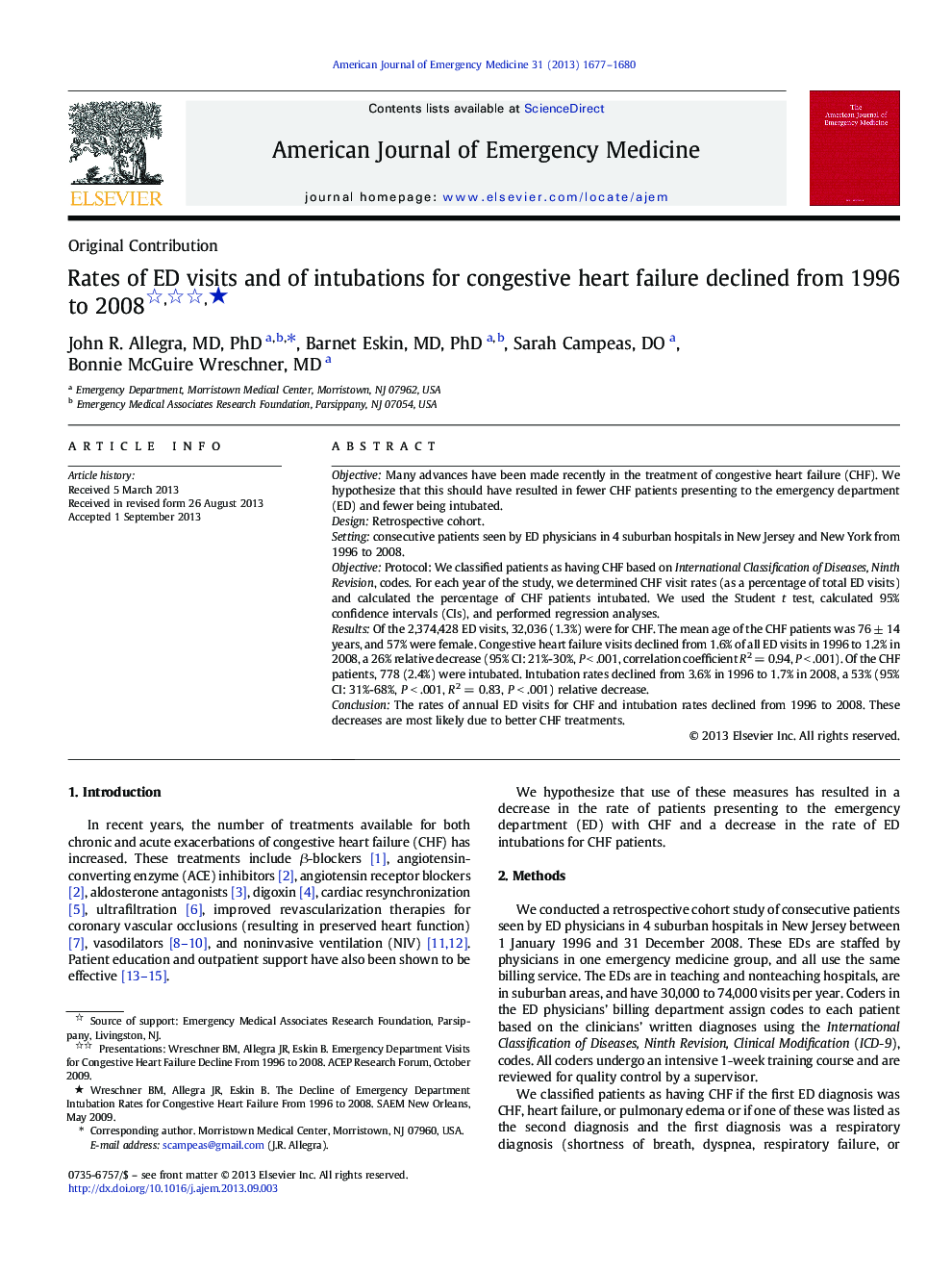| کد مقاله | کد نشریه | سال انتشار | مقاله انگلیسی | نسخه تمام متن |
|---|---|---|---|---|
| 3224841 | 1588123 | 2013 | 4 صفحه PDF | دانلود رایگان |

ObjectiveMany advances have been made recently in the treatment of congestive heart failure (CHF). We hypothesize that this should have resulted in fewer CHF patients presenting to the emergency department (ED) and fewer being intubated.DesignRetrospective cohort.Settingconsecutive patients seen by ED physicians in 4 suburban hospitals in New Jersey and New York from 1996 to 2008.ObjectiveProtocol: We classified patients as having CHF based on International Classification of Diseases, Ninth Revision, codes. For each year of the study, we determined CHF visit rates (as a percentage of total ED visits) and calculated the percentage of CHF patients intubated. We used the Student t test, calculated 95% confidence intervals (CIs), and performed regression analyses.ResultsOf the 2,374,428 ED visits, 32,036 (1.3%) were for CHF. The mean age of the CHF patients was 76 ± 14 years, and 57% were female. Congestive heart failure visits declined from 1.6% of all ED visits in 1996 to 1.2% in 2008, a 26% relative decrease (95% CI: 21%-30%, P < .001, correlation coefficient R2 = 0.94, P < .001). Of the CHF patients, 778 (2.4%) were intubated. Intubation rates declined from 3.6% in 1996 to 1.7% in 2008, a 53% (95% CI: 31%-68%, P < .001, R2 = 0.83, P < .001) relative decrease.ConclusionThe rates of annual ED visits for CHF and intubation rates declined from 1996 to 2008. These decreases are most likely due to better CHF treatments.
Journal: The American Journal of Emergency Medicine - Volume 31, Issue 12, December 2013, Pages 1677–1680